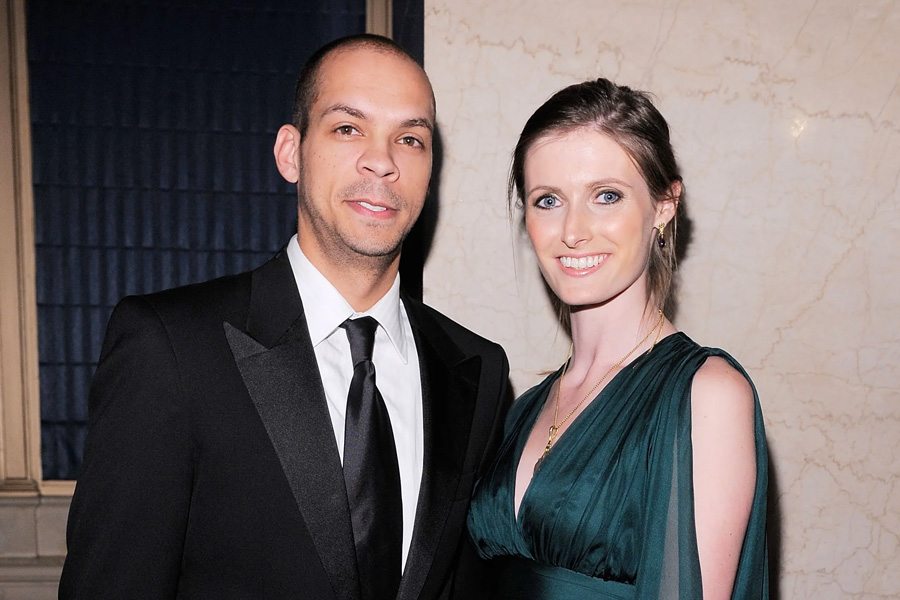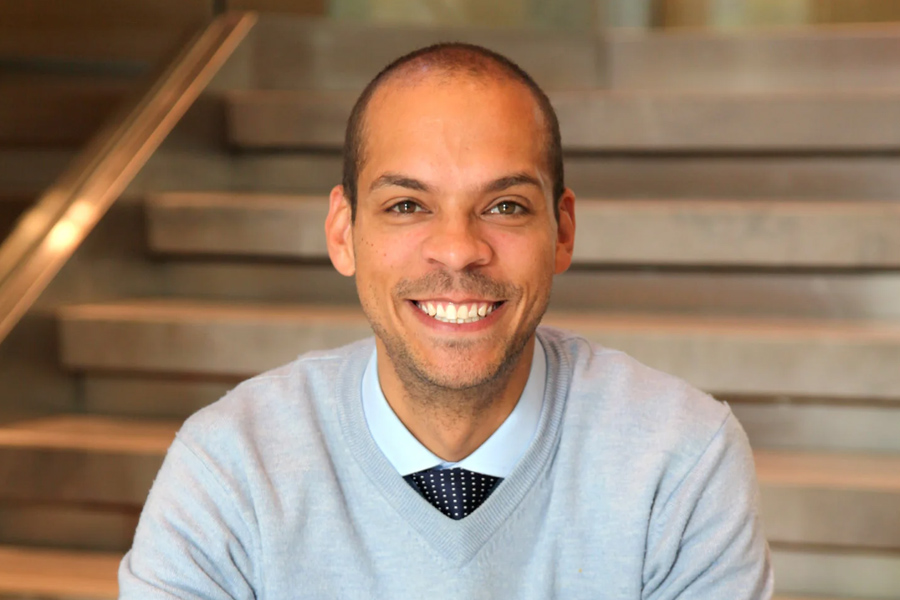Basic Information
| Field | Details |
|---|---|
| Full Name | Garren Givens |
| Nationality | American |
| Occupation | Technology executive, entrepreneur; former U.S. government innovation official |
| Education | Yale University (undergraduate) |
| Known For | Leadership of the Presidential Innovation Fellows (PIF) program; 18F/GSA roles; enterprise AI adoption work |
| Current Focus | AI adoption and solutions in the enterprise (publicly associated with NVIDIA) |
| Spouse | Alexandra Reeve Givens (married 2008) |
| Children | Two; son Christopher Russel Reeve Givens (born June 13, 2015, Washington, D.C.) and a daughter |
| Areas of Focus | Civic tech, product and engineering leadership, AI strategy, technology policy engagement |
From Startups to Service
Before he took a seat at the policymaking table, Garren Givens learned to build at the workbench. Early in his career he founded and operated startups—an e‑commerce venture among them—sharpening product instincts and an operator’s pragmatism. Those years were the crucible: shipping code on tight timelines, translating ambiguous requirements into user-facing value, and discovering that the hardest part of technology is seldom the technology. This entrepreneurial arc set the stage for a pivot that would define his public profile: bringing private-sector urgency to public-sector missions.
A White House Chapter: Presidential Innovation Fellows
In 2012, the Obama administration launched the Presidential Innovation Fellows to inject entrepreneurial talent into federal agencies. Givens joined that wave and then helped steer it—first as a Presidential Innovation Fellow and later as a leader of the program. Between roughly 2012 and 2016, he worked to scale recruiting, professionalize selection, and strengthen the program’s operating cadence so it could endure beyond a single administration.
The outcomes were tangible. The PIF model matured from an experiment to a repeatable pathway for technologists to deliver public impact. The program’s permanence was later reinforced in law, and the scaffolding built during that period helped PIF evolve into a durable institution. It’s the kind of work that looks procedural from the outside but feels like choreography on the inside—balancing talent, mission, and bureaucracy without missing a beat.
18F and the Craft of Public Digital Delivery
In parallel, givens took on roles supporting 18F at the General Services Administration, the government’s in‑house digital consultancy born to modernize federal services. As deputy in the program’s leadership ranks, he focused on the connective tissue: recruiting and onboarding multidisciplinary teams, establishing delivery practices, and aligning product efforts to agency outcomes. The headline was simple—ship better services, faster—but the craft was complex: user research with diverse populations, iterative releases inside regulatory constraints, and procurement that enabled agility rather than stifling it.
After Government: Building, Advising, Scaling
Exiting government around mid‑2016, givens returned to the builder’s bench—advising founders, investing in early teams, and anchoring product roles that sit at the intersection of engineering and strategy. He carried forward a civic-tech lens: measurable outcomes, practical roadmaps, and an instinct to design with—not just for—end users. That orientation makes him a translator across domains: policy to product, research to deployment, vision to backlog.
AI in the Enterprise: NVIDIA and the Adoption Playbook
In the 2020s, his public profiles point to work focused on AI adoption and solutions at NVIDIA, where the hard problems aren’t only about model performance but about enterprise integration. The playbook he projects is clear-eyed: start with a concrete business use case, ensure data pipelines are reliable and governed, align infrastructure to the latency and cost profile that the application demands, and instrument everything for quality and safety. Pilots are only useful if they graduate to production; AI must earn its keep.
He participates in policy and standards conversations as well, sharing practitioner perspectives in hearings, panels, and advisory settings. That dual vantage—hands on the controls of deployment, feet in the halls of policy—helps him map the frontier where innovation meets accountability. In an era where every boardroom asks for an AI strategy, the difference between a slide and a system often hinges on this kind of grounded leadership.
Family Ties and Public Moments
Givens married Alexandra Reeve Givens in 2008, a union that fuses two neighboring worlds: technology and law, innovation and rights. Alexandra is a prominent technology-policy executive who serves as President and CEO of the Center for Democracy & Technology. Together, they navigate the fast-changing terrain of digital life from complementary vantage points—he from build-and-deploy practice, she from governance and civil liberties.
Their family life is occasionally, and selectively, in public view. On June 13, 2015, they welcomed a son, Christopher Russel Reeve Givens, in Washington, D.C.; their family also includes a younger daughter. In 2024, the couple appeared at screenings and premieres for Super/Man: The Christopher Reeve Story, reflecting ties to Alexandra’s family legacy. These are measured glimpses—red carpets and photographs—offering a reminder that public service and private life can coexist with care.
Timeline at a Glance
| Year/Date | Milestone |
|---|---|
| 2008 | Married Alexandra Reeve Givens |
| 2012 | Joined Presidential Innovation Fellows (PIF) |
| 2013–2016 | Led and expanded PIF; supported 18F/GSA transformation efforts |
| June 13, 2015 | Birth of son, Christopher Russel Reeve Givens, in Washington, D.C. |
| Mid‑2016 | Transitioned from government to private-sector entrepreneurship and advising |
| 2020s | Focused on enterprise AI adoption and solutions; active in policy forums and industry panels |
| 2024 | Appeared publicly with family at Super/Man: The Christopher Reeve Story festival and premiere events |
What Sets His Leadership Apart
- Builder’s bias: Start with a real user problem, not a technology in search of a home.
- Measurable outcomes: Tie every initiative to a metric that matters—time to value, cost to serve, satisfaction, reliability.
- Systems thinking: Align talent, process, and infrastructure so each decision compounds rather than fragments.
- Bridge work: Translate across communities—engineers and executives, policymakers and product teams.
In both government and industry, this pattern shows up as a consistent throughline: take complexity and render it navigable; take urgency and make it sustainable.
Civic-Tech Roots, Private-Sector Reach
A career that spans startups, federal transformation, and enterprise AI offers a rare vantage point on how innovation actually diffuses. In the public sector, the bottleneck is often capacity and process; in the private sector, it’s alignment and incentives. Givens’ record suggests a focus on both: building pipelines that deliver talent and product, and creating mechanisms that turn pilots into platforms. The result is less fireworks, more lighthouses—steady guidance for teams navigating fog.
AI Adoption: Principles in Practice
- Begin with a single high-impact use case that can be deployed in 90–120 days.
- Establish secure, well-governed data pipelines before model selection.
- Match infrastructure to workload: real-time inference differs from batch analytics.
- Bake in evaluation: measure accuracy, latency, cost, drift, and user satisfaction from day one.
- Plan for scale with observability, incident response, and clear model ownership.
This approach treats AI not as a destination but as a capability—one that must integrate with identity, security, and compliance to endure.
Family, Privacy, and Public Service
The family’s public posture is measured. Key milestones are shared, but day‑to‑day life remains private. That balance mirrors how givens approaches public work: visible enough to be accountable, disciplined enough to keep the focus on impact rather than personality. In a world that rewards spectacle, this restraint is its own kind of strategy.
FAQ
Who is Garren Givens?
He is a technology executive and entrepreneur known for leading the Presidential Innovation Fellows program and contributing to 18F’s growth.
Where does he work today?
His public profiles indicate he works on AI adoption and solutions at NVIDIA.
What is he known for in government?
He helped scale and professionalize the PIF program and supported digital delivery efforts at 18F within GSA.
What is his educational background?
He studied at Yale University, where he met his future spouse.
Who is his spouse?
He is married to Alexandra Reeve Givens, a technology-policy executive and the President & CEO of the Center for Democracy & Technology.
Do they have children?
Yes, they have two children: a son, Christopher Russel Reeve Givens (born June 13, 2015), and a daughter.
Is his net worth publicly known?
No, there are no authoritative public disclosures of his net worth.
Has he participated in technology policy?
Yes, he has engaged in AI and technology policy forums, including hearings and panels.
What are his primary areas of focus today?
Enterprise AI adoption, solutions architecture, and the practical integration of AI into real-world workflows.
What’s a hallmark of his leadership style?
Translating complex goals into executable plans with clear metrics and cross-functional alignment.





